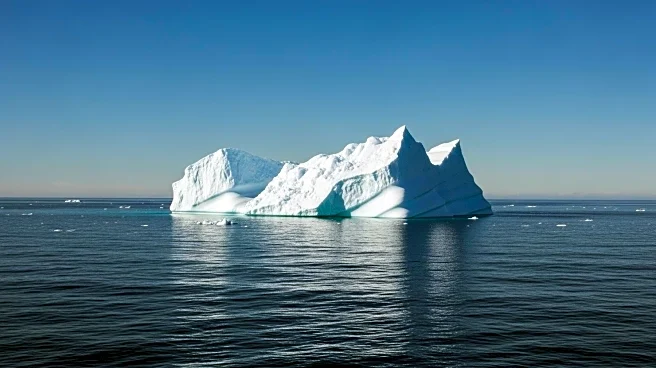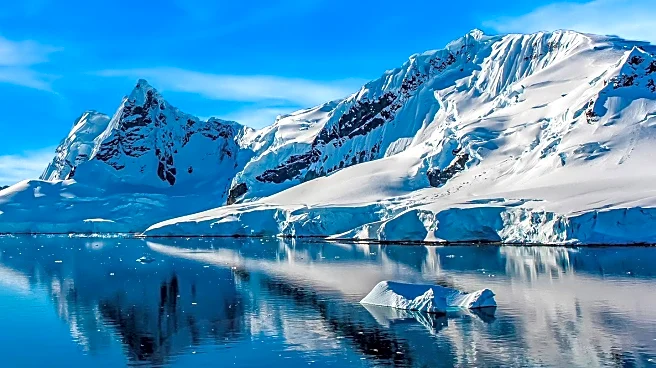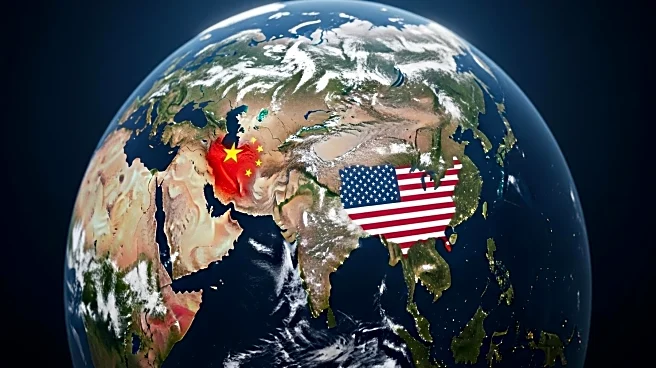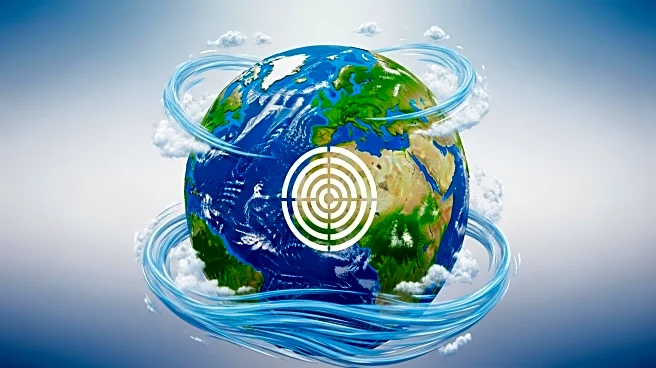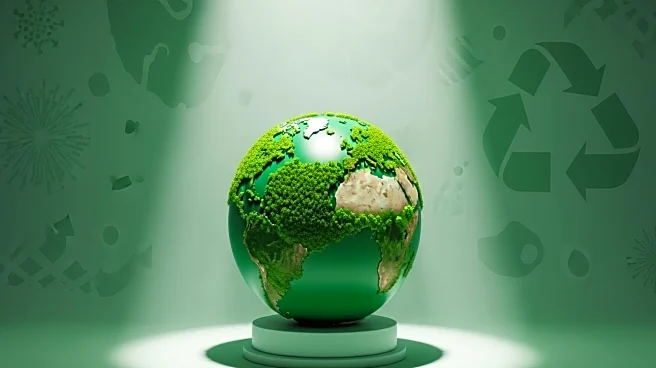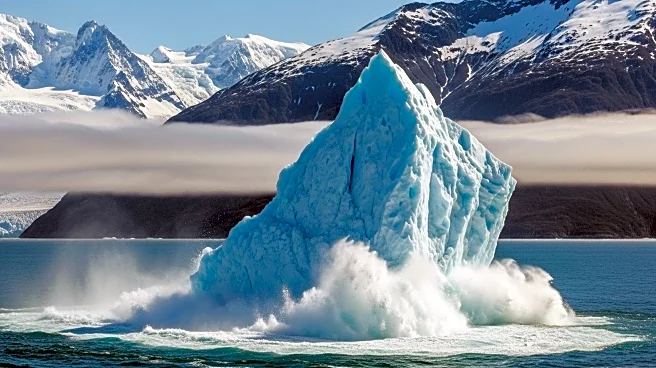What is the story about?
What's Happening?
NASA has released data indicating that ice sheets in Antarctica and Greenland are experiencing significant mass loss due to rising air and ocean temperatures. The GRACE and GRACE Follow-On satellites have been monitoring these changes since 2002, revealing that Antarctica is losing approximately 135 billion tons of ice annually, while Greenland is losing about 266 billion tons per year. This melting contributes to global sea level rise, as the meltwater drains into the oceans. The data collection resumed in 2018 after a brief hiatus, and the findings are continuously updated as new observations become available.
Why It's Important?
The melting of ice sheets in Antarctica and Greenland is a critical indicator of climate change, with direct implications for global sea levels. As these ice masses diminish, coastal regions worldwide face increased risks of flooding and erosion, threatening infrastructure and ecosystems. The data underscores the urgency for international climate policy and adaptation strategies to mitigate these impacts. Stakeholders, including governments and environmental organizations, must prioritize efforts to address the root causes of climate change and invest in sustainable solutions to protect vulnerable communities.
What's Next?
Continued monitoring of ice sheet mass loss is essential to understanding the long-term trends and impacts of climate change. NASA's ongoing satellite missions will provide valuable data to inform policy decisions and climate models. As the situation evolves, governments may need to implement more aggressive measures to reduce greenhouse gas emissions and invest in coastal protection projects. Collaboration between scientific institutions and policymakers will be crucial in developing effective strategies to combat the effects of ice sheet melting.
Beyond the Headlines
The melting ice sheets not only contribute to sea level rise but also have broader implications for global climate systems. Changes in ice mass can affect ocean currents and weather patterns, potentially leading to more extreme weather events. Additionally, the loss of ice habitats poses a threat to biodiversity, impacting species that rely on these environments for survival. Understanding these interconnected effects is vital for developing comprehensive climate action plans.
AI Generated Content
Do you find this article useful?
